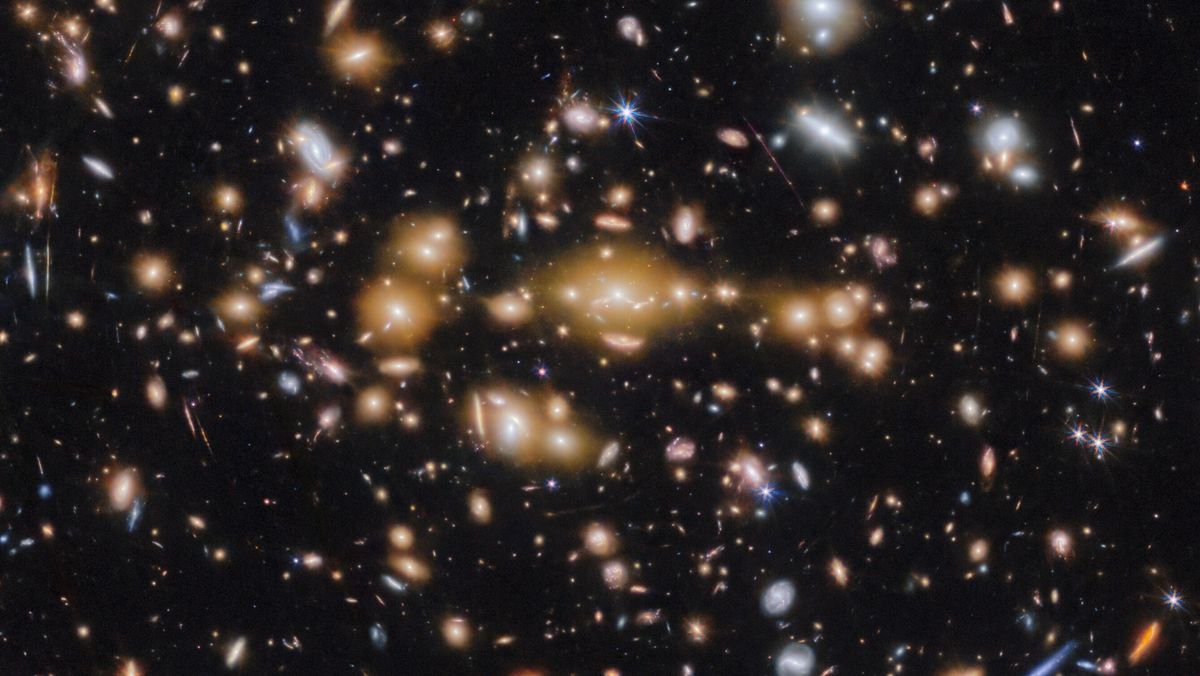The James Webb Space Telescope (JWST) has discovered what could be the earliest star clusters in the universe.
JWST spotted the five proto-globular clusters — swarms of millions of stars bound together by gravity — inside the Cosmic Gems arc, a galaxy that formed just 460 million years after the Big Bang.
The Cosmic Gems arc gets its name from its appearance: When seen from our solar system, the star-studded galaxy looks like a hair-thin crescent due to the powerful gravitational influence of a foreground galaxy, which magnifies and distorts the distant galaxy’s appearance.
The galaxy is the most highly magnified region seen in the first 500 million years of our universe, giving astronomers an unprecedented window into how the stirrings of the first stars sculpted galaxies during cosmic dawn.
Cosmic dawn is the time encompassing the first billion years of the universe. Roughly 400 million years after the Big Bang, the Epoch of Reionization began, in which light from nascent stars stripped hydrogen of their electrons, leading to a fundamental reshaping of galaxy structures.
“The early universe is nothing like we expected,” study first author Angela Adamo, an astronomer at Stockholm University, told Live Science. “Galaxies are more luminous, they form stars at break-neck speed, and they do so in massive and dense star clusters. We are building a new understanding of how early galaxies formed.”
The researchers published their findings June 24 in the journal Nature.
Related: James Webb telescope confirms there is something seriously wrong with our understanding of the universe
Lights on at cosmic down
As stars form, they fling out material in the form of winds and jets of ionized plasma — a process known as stellar feedback.
“To form these 5 star clusters this tiny galaxy had to do so with very high efficiency,” Adamo said. “The stellar feedback from the stars in star clusters must have been tremendous.”
Scientists discovered the Cosmic Gems arc in 2018 using the Hubble Space Telescope. Usually, galaxies from such an early time emit light that is far too faint to be detected by telescopes. But a phenomenon called gravitational lensing can help astronomers view them.
As Einstein outlined in his theory of general relativity, gravity is the curving and distortion of space-time in the presence of matter and energy. This curved space, in turn, sets the rules for how energy and matter move.
This means that even though light travels in a straight line, light can be bent and magnified by the presence of gravity. In this case, the galaxy SPT-CL J0615-5746 sits between the Cosmic Gems arc and our solar system, bending and magnifying the early galaxy’s light so it can be viewed by telescopes.
By pointing JWST at this region of curved space, astronomers observed the Cosmic Gems arc in unprecedented detail, resolving the five globular clusters nestled within. They found that the clusters were incredibly dense, being roughly three orders of magnitude denser than star-forming regions observed closer to Earth.
The clusters are among the first to ever be observed. But it’s still unclear whether they are the first to exist, Adamo said.
“In principle, I would expect star formation to take place in a clustered fashion even in quite primordial galaxies,” she added. “But to form [massive] proto globular clusters, the host galaxy needs to be capable of creating and retaining enough mass in gas. So it all depends on how fast primordial galaxies can grow.”
To learn more about the cosmos’s first embers in the region, the researchers will follow up with a spectroscopic analysis using the JWST. This will enable astronomers to reconstruct the physical properties of the clusters, further constrain their ages, and trace the impact the clusters’ stars had on their wider galaxy.


